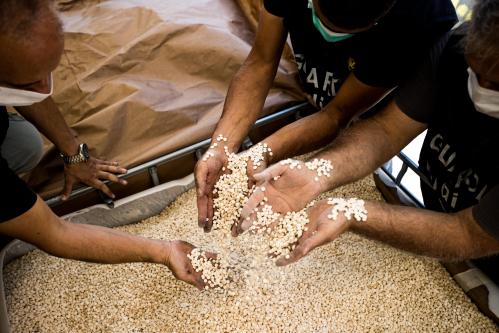“Pakistan is playing a very effective role against terrorism and extremism in the world.” This is one of “Pakistan’s contributions towards peace-keeping in the world”, a direct quote from the new Punjab Class 10 Pakistan Studies textbook, in a chapter on Pakistan in world affairs. This statement would be greeted with incredulity in the rest of the world. It is just one example of a distorted sense of the world, and of our place in the world, that is conveyed in our textbooks.
Overall, the two Pakistan Studies textbooks for Classes 9 and 10 for 2013-14, which follow the new curriculum, present a marked improvement over the corresponding one for Sindh (which I reviewed in my op-ed on September 1). Each chapter has much more substance, detailing actual historical events rather than the repetitive, sometimes nonsensical, statements in the old Sindh textbook. That there is a full chapter on Pakistan’s place in the world is in itself an improvement.
But biases and errors remain. The view of history presented here remains one-sided, with India and Hindus consistently presented as conspiratorial and deceitful — both before the creation of Pakistan and after independence (resulting in, among other things, the break-up of Pakistan in 1971). The word ‘conspiracy’, overwhelmingly used with reference to India, is an all too frequent refrain. Pakistan and its leaders are, no surprise, always selfless, sincere and honest. As in the Sindh textbook, Bangladesh’s creation is stated to be the work of a “secret arrangement of big powers”. No wonder that Pakistanis are the world’s foremost conspiracy theorists.
In a broader sense, much of the context is lost when students are not taught World History.
Mentions of terrorism in this textbook are sparing. “Pakistan supported America in Afghan war but as a consequence Pakistan itself is facing terrorism”, and the sentence that began this op-ed, are the two mentions of terrorism. The book does not at all impart a sense of the depth of the terrorism problem Pakistan is facing today. That is a mistake. On Pakistan’s relationship with America, we hear of the “two-face” characters of America and the Europeans post-1965. Since September 11, the book states that “America has given loan of billions of dollars to Pakistan. However, it has never given aid for any big project of long-lasting economic and defence benefits to Pakistan.” No doubt USAID, and the US military and Congress would be aggrieved to hear this statement.
There is an effort to detail Pakistan’s relationship with a number of other countries, but as a series of facts — with dates of visits from one head of state to the other and regional conferences held in various capitals — which does not convey the true essence of these relationships. In a broader sense, much of the context is lost when students are not taught World History.
I recognise that it wouldn’t be realistic for textbooks (anywhere in the world) to be completely free of bias. These new Punjab textbooks use the word ‘enemy’ a lot less, and the word ‘evil’, not at all, relative to the old Sindh textbooks. But given where the country is today — when we are not sure ‘whose war’ it is that has seen 6,000 of our own citizens killed at the hands of other Pakistanis, when a Christian church massacre becomes a conspiracy to derail peace talks with a stakeholder who is a bloodthirsty animal showing no desire for peace — and given that the root of these very problems can be traced to what we have been taught, there is room for improvement.
The good news is that there is hope that such improvements can be made. In addition to the curriculum reform, the new competitive process for textbook writing by private publishers (based on the National Textbook and Learning Materials Policy of 2007) and the multi-step iterative process through which these submissions are reviewed, revised and the best of the best selected as the official textbook, are positive steps. Further iterations and suggestions for improving these new textbooks are welcomed by the new Punjab Curriculum Authority, as well as by the new publishers, who at the end of the textbooks, ask us to call in with suggestions and corrections. It is time that we — academics, parents, teachers and students — use these channels to voice our concerns.



Commentary
Op-edUnderstanding The World Through Our (New) Textbooks
October 3, 2013